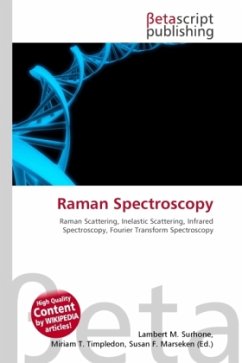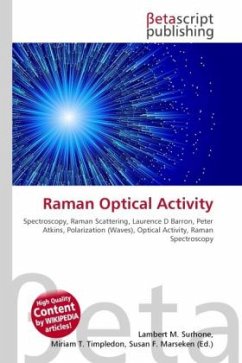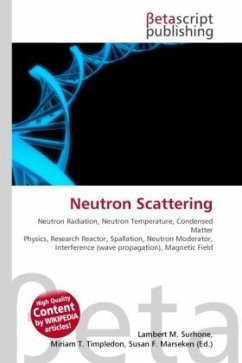
Raman Scattering
Versandkostenfrei!
Versandfertig in 6-10 Tagen
23,99 €
inkl. MwSt.

PAYBACK Punkte
12 °P sammeln!
Please note that the content of this book primarily consists of articles available from Wikipedia or other free sources online.Raman scattering or the Raman effect (pronounced / r m n/) is the inelastic scattering of a photon. Discovered by Sir Chandrasekhara Venkata Raman in liquids and by Grigory Landsberg and Leonid Mandelstam in crystals. When light is scattered from an atom or molecule, most photons are elastically scattered (Rayleigh scattering), such that the scattered photons have the same energy (frequency) and wavelength as the incident photons. However, a small fraction of the scatt...
Please note that the content of this book primarily consists of articles available from Wikipedia or other free sources online.Raman scattering or the Raman effect (pronounced / r m n/) is the inelastic scattering of a photon. Discovered by Sir Chandrasekhara Venkata Raman in liquids and by Grigory Landsberg and Leonid Mandelstam in crystals. When light is scattered from an atom or molecule, most photons are elastically scattered (Rayleigh scattering), such that the scattered photons have the same energy (frequency) and wavelength as the incident photons. However, a small fraction of the scattered light (approximately 1 in 10 million photons) is scattered by an excitation, with the scattered photons having a frequency different from, and usually lower than, the frequency of the incident photons. In a gas, Raman scattering can occur with a change in vibrational, rotational or electronic energy of a molecule (see energy level). Chemists are concerned primarily with the vibrational Raman effect.












